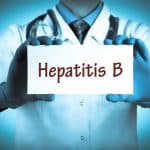Can Carbs Harm the Liver?
For those of us living with liver disease, there appears to be an endless supply of warnings against which foods to avoid, habits to break and activities to dodge. It seems the healthy lifestyle revolution was created exclusively for those with an impaired liver, giving no mercy to people with cravings or personal preferences. Although a common food category in the American diet has been added to our list of things to avoid, healthcare experts have assembled some tips to help people minimize their intake of certain carbohydrates.
Nutritionists have known for a long time that foods with a high glycemic index foster weight gain, and when dominant in the diet may even spawn adult onset diabetes. Confirming their negative impact on health, researchers from Children’s Hospital Boston have recently demonstrated a linear relationship between carbohydrates with a high glycemic index and a fatty liver.
Glycemic Index
Over the last 30 years, research into food and blood glucose response has completely changed our carbohydrate classification system. By measuring how quickly foods are digested and absorbed, the glycemic index measures the body’s response to carbohydrates. The rate at which carbohydrates elevate blood sugar defines a food’s glycemic measurement:
- High – Carbohydrates with a high glycemic index are absorbed quickly into the blood stream and cause a rapid rise in blood glucose levels. This demands a quick response from the pancreas to release insulin for the metabolization and storage of the sugar. Over time, consumption of high glycemic foods stresses the pancreas and the immune system by causing the blood sugar highs and lows endemic to diabetes and hypoglycemia. A glycemic value of 70 or more is considered high.
- Low – Foods with a low glycemic index are broken down more slowly into simple sugars, keeping blood glucose levels more stable. The absorption of these foods is therefore more gradual and does not contribute to blood sugar highs and lows.
The Research
Associate professor of pediatrics and director of the Optimal Weight for Life program, David Ludwig, MD, PhD of Children’s Hospital in Boston led the research suggesting that high glycemic foods pave the way for fatty liver disease. “Our experiment creates a very strong argument that a high-glycemic index diet causes, and a low-glycemic index diet prevents, fatty liver in humans,” stated Ludwig.
Published in the September 2007 issue of Obesity, this study investigated the effect of feeding mice either a high or low glycemic index diet containing a type of cornstarch that was either quickly or slowly digested. Diets were then controlled to contain equal calories, fat, protein and carbohydrates. Ludwig and co-workers report that, after six months, the mice weighed the same. However, the differences between the mice were as follows:
- Those on the low glycemic index diet were lean, with normal amounts of body fat.
- Those fed the high glycemic index diet had double the normal amount of fat in their bodies, blood and livers.
According to Ludwig, the mechanism behind the apparent damage of consuming a high glycemic index diet is the increased production of insulin. Instructing the body to make and store fat, insulin is most concentrated in the liver. Fat in the liver increases a person’s risk for liver inflammation, which can ultimately cause liver damage.
Preventing a Fatty Liver
While many lifestyle adjustments are touted for improving liver health, two ways of preventing fat accumulation in the liver are choosing low glycemic instead of high glycemic foods and supplementing with milk thistle to reduce insulin resistance.
By choosing low glycemic foods, sharp swings in blood sugar are avoided, thereby naturally decreasing the body’s production of insulin. Some popular high glycemic foods to restrict in your diet are:
- Potatoes
- Corn
- White flour
- Rice – white or brown
- Refined sugar – white or brown
- Watermelon
- Most refined breakfast cereals
Some popular low glycemic foods to increase in your diet are:
- Apples or pears
- Yams
- Nuts
- Legumes
- Whole grains (especially barley and oats)
- Agave or stevia
In addition to choosing your carbohydrates carefully, supplementing with milk thistle offers an additional level of protection against fat accumulation in the liver. The regular use of milk thistle decreases insulin resistance, where normal amounts of insulin are inadequate to normalize blood sugar.
According to a study published on October 30, 2006 in Phytotherapy Research, Iranian researchers demonstrated that milk thistle seed extract helped control blood sugar for people with type 2 diabetes. In this double-blind study, diabetics taking milk thistle for four months showed better blood sugar control, cholesterol and triglyceride levels than the control group. This research shows that milk thistle can help stabilize swinging blood glucose levels to prevent the accumulation of insulin and therefore fat in the liver.
In order to thwart the burgeoning numbers of people with fatty liver, a better understanding of beneficial carbohydrates is needed. Since consuming lots of high glycemic foods such as bread, cake and rice contributes to a fatty liver, those concerned with liver health are better off choosing low glycemic foods. The more we protect our liver’s health by supplementing with milk thistle and eating low glycemic carbohydrates, the further away a fatty liver disease epidemic becomes.
References:
http://naturalmedicine.suite101.com, The Who’s Who of Sugars, Victoria Anisman-Reiner, August 2006.
http://ukpress.google.com, Diet Link to Liver Disease, The Press Association, 2007.
www.bodybuildingforyou.com What is the Glycemic Index (GI)?, Gary Matthews, bodybuildingforyou.com, 2007.
www.childrenshospital.org, Quick-Burning Carbs May Cause Fatty Liver, Children’s Hospital Boston, September 2007.
www.ehow.com, How to Avoid High Glycemic Foods, eHow Inc., 2007.
www.foodnavigator.com, High GI Diets May Increase Fatty Liver – Study, Decision News Media SAS, September 2007.
www.nccam.nih.gov, Milk Thistle, National Institutes of Health, 2007.
www.nursingpractice.com, Liver Disease Link to Carbohydrates, Campden Publishing Limited, September 2007.
www.webmd.com, Milk Thistle May Help Treat Diabetes, Miranda Hitti, WebMD Inc., 2007.







